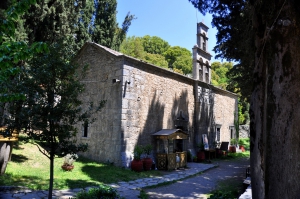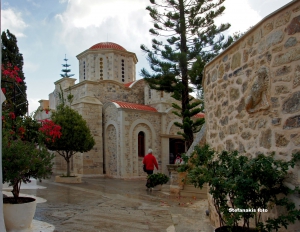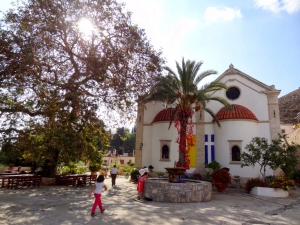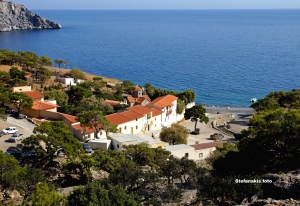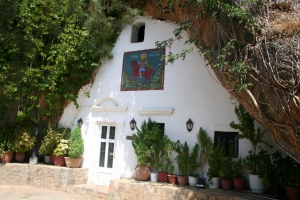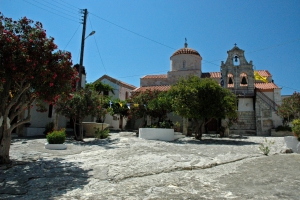The monastery of Vidiani is located at the foot of the mountain Louloudaki, near the village of Kato Metohi in Lassithi Plateau. Access is very easy, as the peripheral road of the plateau runs just next to it.
The fortified monastery of Agarathos is located 23km east of Heraklion in a wooded location at an altitude of 538m near Episkopi. The monastery, especially during the Venetian Era, was one of the richest in Crete owning several other monasteries in Heraklion and Lassithi prefectures. It is considered the first in the hierarchy of the monasteries of the island.
The Monastery of St. George Apanosifis or Epanosifis is located about 30km south of Heraklion, near Metaxohori village. It is the largest male monastery in Crete (in monk number). The spiritual and social contribution of the monastery during the difficult years of Turkish occupation was invaluable.
The Monastery of St. John the Baptist is built in position Korakies of Akrotiri, close to the airport of Chania. It is a historic convent which is relatively unknown in Chania.
Koudoumas monastery is located at the exit of Katarraktis gorge in Asterousia Mountains, 80km south of Iraklion and only 40m from a beautiful beach. It is one of the most secluded monasteries of Crete, as access from Heraklion requires 2.5 hours. There is a safe 24km long dirt road that starts from the village Sternes (accessible from Charakas), at an altitude of 1000m near the peak Kofinas (1231m).
\
Agios Nikitas is located 65km south of Heraklion, on the east side of the wild and arid Asterousia Mountains. The monastery was originally a hermitage for monks from the monastery of Koudoumas. It is built on a high hill with breathtaking views to the Libyan Sea. The church of the monastery, dedicated to St. Nikitas (feast September 15), is built in a cave and dates back in 1640.
The Monastery of Prophet Elijah (Profitis Elias) is built above a hill with panoramic views, 20km south of Rethymno, next to Roustika village. It is a relatively unknown monastery throughout Crete, although it was founded in the Venetian Era and belongs to the most historic convents on the island.











